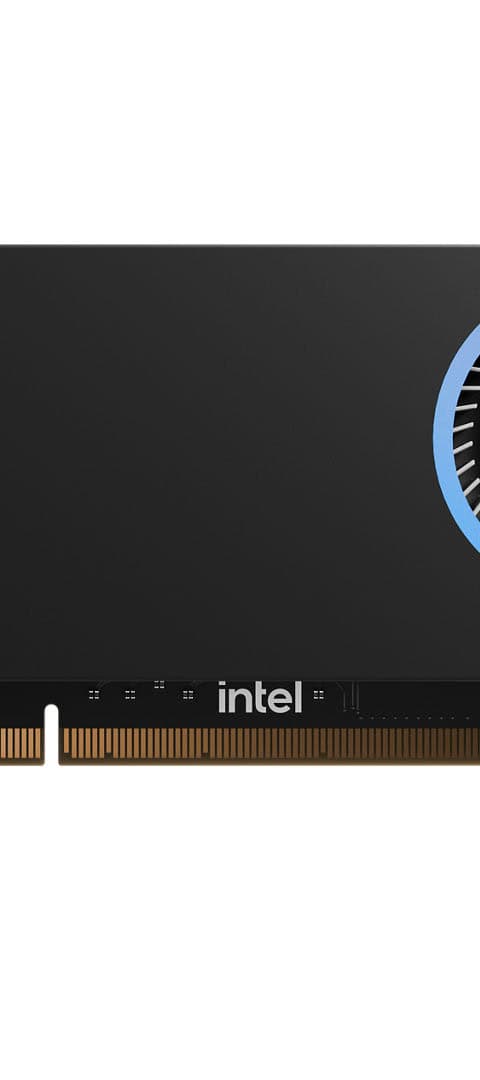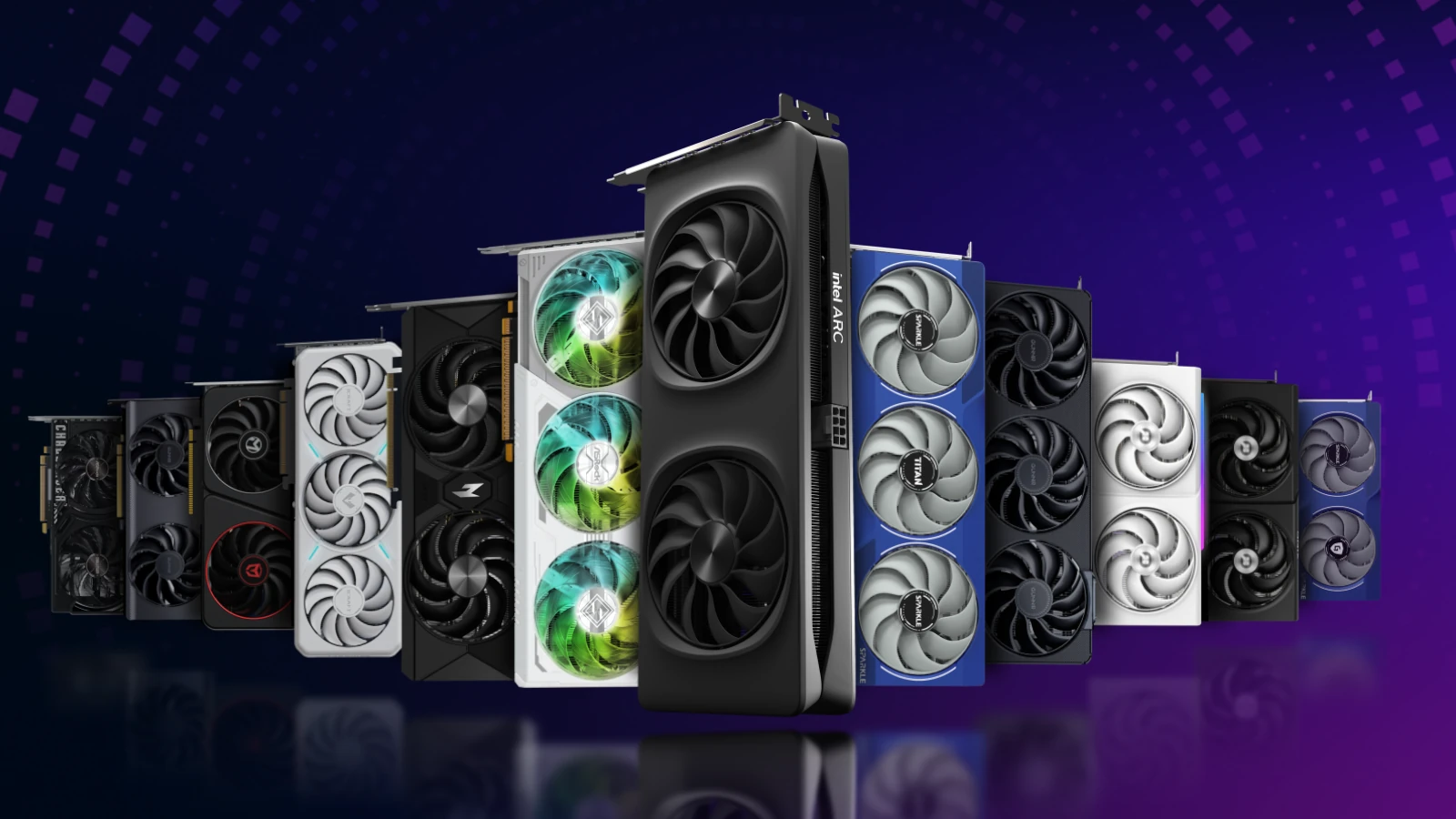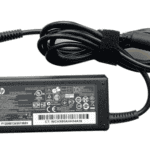Intel’s next-generation Battlemage GPUs are shaping up to be a pivotal moment for the company’s discrete graphics ambitions. With mid-range offerings like the Arc B570 and B580 already on the market, the spotlight is shifting to the more powerful B770 and B780 GPUs—and the professional-grade Arc Pro series targeting AI and workstation use cases. Here’s the latest, including confirmed details and emerging rumors.

Intel Arc B770 & B780 – The High-End Gaming Battlemage Cards
Intel is reportedly preparing to launch the Arc B770 in Q4 2025, positioning it as a high-performance alternative to the existing B580. Based on leaks and insider info, the B770 may use the larger BMG-G31 die and feature:
| Feature | Spec (Rumored) |
|---|---|
| Xe2 Cores | 24–32 |
| VRAM | 16GB GDDR6 |
| Memory Bus | 256-bit |
| Architecture | Xe2 “Battlemage” |
| Ray Tracing | 2nd-gen RT units |
| Performance Target | Comparable to RTX 4070 Super / RTX 4070 Ti Super |
| Launch Window | Q4 2025 |
This would mark Intel’s first real attempt to crack the high-end gaming market currently dominated by NVIDIA and AMD. Performance leaks place the B770 somewhere between the RTX 4060 Ti and RTX 4070 Super, with pricing speculation hovering around $399–$449.
As for the Arc B780, details are thinner. Intel has only vaguely hinted at its existence via social media, but if it follows the naming logic, it could be a flagship GPU designed to rival the RTX 4080 Super tier. Whether it uses the same G31 silicon or a scaled-up version remains unconfirmed.
Intel seems to be using the G21 and G31 GPU dies across Battlemage products, with the G31 reserved for top-tier models like the B770/B780 and high-memory Pro variants.
Arc Pro Series – AI and Workstation Powerhouses

At Computex 2025, Intel officially introduced new Arc Pro GPUs based on Battlemage. These cards cater to professional workloads like AI inference, content creation, and engineering simulations, and prioritize high VRAM capacity:
| Model | VRAM | Die | Use Case | Notes |
|---|---|---|---|---|
| Arc Pro B60 | 24GB GDDR6 | BMG-G21 | AI, HPC, ProRender | Flagship Pro SKU |
| Arc Pro B60 Dual 48G | 48GB (2x24GB) | Dual GPU | Extreme AI workloads | Two B60 chips on one board |
| Arc Pro B50 | 16GB GDDR6 | Unconfirmed | Entry workstation | MSRP $299 |
These GPUs use custom Pro drivers, support ISV certifications, and are part of Intel’s “Project Battlematrix”—a new professional computing platform designed to support up to 8x Pro B60 GPUs in a single system.
This Pro lineup signals Intel’s deepening investment in the AI acceleration market, with the B60 Dual 48G variant catering to developers working with massive machine learning models.

Roadmap and Market Strategy
Intel’s Battlemage roadmap can be broken down as follows:
| GPU Series | Status | Segment | Launch |
|---|---|---|---|
| Arc B570 | Released | Mainstream Gaming | Jan 2025 |
| Arc B580 | Released | Mainstream Gaming | Dec 2024 |
| Arc B770 | Rumored | High-End Gaming | Q4 2025 |
| Arc B780 | Unconfirmed | Enthusiast Gaming | Possibly 2026 |
| Arc Pro B50 | Announced | Workstation | Mid-2025 |
| Arc Pro B60 | Announced | AI Workstation | Mid-2025 |
| Arc Pro B60 Dual 48G | Announced | AI / Research | Mid-2025 |
Intel is expected to provide more detail about the B770 and B780 at Computex 2025 or later in the year, while the Pro series is already making waves with system integrators and researchers.
Intel’s Battlemage Advantage – A Closer Look
- Xe2 GPU Architecture – Built from the ground up, Xe2 improves rasterization, ray tracing, and AI acceleration. It includes second-generation ray tracing units and enhanced Xe Matrix Extensions (XMX) for AI workloads.
- XeSS 2.0 Upscaling – Intel’s upscaling solution competes with DLSS and FSR. XeSS 2.0 supports frame generation, super resolution, and low-latency rendering, and has shown improved performance over the original version.
- Driver Maturity – Intel has made notable progress with driver optimization. Recent Arc updates have narrowed performance gaps and improved compatibility in major gaming titles and creative apps.

Current Battlemage GPUs Available
While you wait for the B770/B780, here’s a snapshot of current Arc Battlemage GPUs available on the market:
| Model | VRAM | Price | Performance Target | Rating |
|---|---|---|---|---|
| Arc B580 LE | 12GB | $374.95 | RTX 4060 / RX 7600 | ★★★★☆ (4.4) |
| Arc B580 Luna OC | 12GB (OC) | $410.37 | Slightly above B580 | ★★★★★ (5.0) |
| Arc B570 OC | 10GB | $249.99 | Entry 1080p Gaming | ★★★☆☆ (3.4) |
These models are especially strong for users needing higher VRAM at lower prices, making them attractive to indie game devs, AI tinkerers, and 1440p gamers on a budget.
Final Thoughts
Intel’s Battlemage GPU family is evolving fast, with a clear strategy to capture both the mainstream gaming and AI workstation markets. While the B770 and B780 promise to push into enthusiast territory, the real surprise is the robust Pro series designed for AI-heavy workloads. With dual-GPU boards, up to 48GB VRAM, and scalable platforms like Battlematrix, Intel is laying the groundwork for something much bigger.
All eyes now turn to Computex 2025, where more details on the B770 and future Battlemage products are expected. Whether Intel can truly challenge NVIDIA and AMD at the high end remains to be seen—but the battleground is set.
Best Graphics Card on the Market
Choosing a graphics card can be tough with so many options out there. Gamers and content creators alike need powerful GPUs to handle demanding tasks. The best graphics card on the market right now is the NVIDIA RTX 5090, which offers the highest performance for those with unlimited budgets.
Graphics cards come in various price ranges to fit different needs. AMD options like the Radeon RX 7900 XTX provide strong competition with better value in some cases. The right choice depends on your specific requirements, monitor resolution, and the types of programs or games you plan to run.
1. Nvidia GeForce RTX 5090
The GeForce RTX 5090 represents the top tier of graphics cards currently available. Built on Nvidia’s new Blackwell architecture, this powerhouse comes equipped with 32 GB of GDDR7 memory, pushing the boundaries of gaming and creative performance.
Starting at $1999, the RTX 5090 positions itself firmly in the premium segment of the market. The price reflects its status as the pinnacle of raw power in the graphics card world.
Physical design changes are notable in this generation. The Founders Edition features a two-fan setup that makes the card hefty yet somehow smaller than its predecessor. Its appearance has been described as more menacing than the RTX 4090.
Performance tests show impressive results across gaming, content creation, and AI workloads. The 5090 has proven to be the first GPU capable of outperforming the previous champion, the RTX 4090.
For gamers seeking the absolute best frame rates at 4K resolution with ray tracing enabled, this card delivers without compromise. Content creators will appreciate the reduced rendering times for video projects and 3D work.
Power users working with AI models and machine learning applications will find the enhanced tensor cores particularly valuable. The improvements in this area continue Nvidia’s focus on AI acceleration.
The card’s cooling system has been redesigned to handle its power requirements more efficiently. This helps maintain peak performance during extended high-load sessions.
2. AMD Radeon RX 7900 XTX
The AMD Radeon RX 7900 XTX stands as one of the most powerful graphics cards currently available. It handles 4K gaming with ease, running most AAA titles at maximum settings without breaking a sweat.
This card represents AMD’s top offering in their current lineup. It delivers impressive performance that ranks near the top of the charts when compared to other high-end graphics cards.
With 24GB of memory, the 7900 XTX provides ample headroom for demanding games and applications. This generous memory allocation makes it future-proof for upcoming titles that may require more VRAM.
Among the various manufacturer models, the Sapphire RADEON RX 7900 XTX Nitro+ Vapor-X Edition is often considered the top choice. The cooling system on this model helps maintain optimal temperatures even during extended gaming sessions.
Gamers looking for custom water cooling options might consider the ASRock Aqua version. This specialized model caters to enthusiasts who want to integrate the card into their custom cooling loops.
The 7900 XTX offers strong competition to NVIDIA’s offerings at a typically lower price point. This value proposition makes it attractive for gamers who want high-end performance without paying absolute premium prices.
Temperature management varies between different manufacturer versions. Some models feature more robust cooling solutions than others, which can affect both noise levels and sustained performance.
For those building a new high-performance gaming system, the 7900 XTX provides excellent frame rates across virtually all modern games. Its power efficiency has also improved compared to previous AMD generations.
The card supports all modern graphics technologies needed for current gaming, including ray tracing capabilities. While not quite matching NVIDIA’s ray tracing performance, it still delivers impressive visual quality in supported titles.
3. Nvidia RTX 4070 Super
The RTX 4070 Super offers impressive performance at a more reasonable price point than Nvidia’s top-tier cards. Released in January 2024, this GPU sits between the standard 4070 and the 4070 Ti in Nvidia’s lineup.
At a starting price of $549, the 4070 Super delivers excellent 1440p gaming performance and can handle 4K gaming in many titles. The card features the Ada Lovelace architecture and includes enhanced ray tracing capabilities.
When choosing between models, the PNY XLR8 version is considered among the best options by some users due to its triple-slot design and cooling performance. Its build quality makes it a strong contender in the market.
For budget-conscious shoppers, the Asus Dual at MSRP is the cheapest and best RTX 4070 Super option according to some reviewers. This makes it an attractive choice for those watching their spending but wanting solid performance.
Power demands for the 4070 Super are relatively modest compared to higher-end cards. This means most quality 750W power supplies will handle it well, keeping upgrade costs down for many users.
Performance-wise, the 4070 Super roughly matches the previous generation’s RTX 3080. This represents excellent value considering the newer architecture and improved features.
The card excels with DLSS 3 technology, which significantly boosts frame rates in supported games. This feature helps maintain smooth gameplay even at higher resolutions.
Cooling solutions vary between manufacturers, with most cards maintaining reasonable temperatures under load. The triple-fan designs typically offer the best thermal performance for extended gaming sessions.
4. AMD Radeon RX 6750 XT
The AMD Radeon RX 6750 XT stands as a solid mid-range graphics card option for gamers seeking good performance without breaking the bank. Released as a refresh of the previous generation, this card offers improvements that make it worth considering for both 1080p and 1440p gaming.
For 1080p gaming, the RX 6750 XT truly shines. It handles high refresh rate gaming with ease at this resolution, making it a beast for 1080p according to many users. The card also performs respectably at 1440p, though not quite as dominantly.
When comparing models, the XFX QiCK 319 has been a popular choice among buyers. Priced at around €383 on Amazon, this specific model has attracted attention from those looking to purchase a 6750 XT.
The card typically comes with 12GB of VRAM, which is ample for current gaming needs. This memory capacity helps future-proof the card somewhat as games continue to demand more video memory. Best Buy offers several 12GB variants of the RX 6750 XT for those interested in purchasing.
Performance tests in 2024 have shown the card remains competitive, though newer options have since emerged. It’s worth noting that the RX 6750 XT’s performance advantage varies by resolution – showing different percentage improvements compared to previous generation cards depending on whether you’re gaming at 1080p, 1440p, or 4K.
For gamers still considering this card in 2025, it represents a budget-friendly option that can handle most modern games at reasonable settings. The value proposition has improved as prices have dropped since its initial release.
5. Nvidia GeForce RTX 4060 Ti
The RTX 4060 Ti stands out as a solid mid-range graphics card for gamers who want good performance without breaking the bank. Priced at $399, it delivers excellent value for those who primarily game at 1080p resolution.
This card is built on Nvidia’s Ada Lovelace architecture, which brings improvements in both performance and power efficiency. With 3072 GPU cores and a boost clock of 2,460 MHz, it handles modern games with ease.
For 1080p gaming, the RTX 4060 Ti truly shines. Most games can be played maxed out at 1080p, giving players the visual quality they want without compromising on frame rates.
The card also performs reasonably well at 1440p for many titles, though the most demanding games might require tweaking some settings. This makes it a flexible option for gamers who might upgrade their monitors in the future.
One point of interest is that Nvidia released both 8GB and 16GB versions of this card. The 16GB variant offers more memory for texture-heavy games and future-proofing, though at a higher price point.
Ray tracing performance sees improvements over previous generation cards thanks to the dedicated RT cores. DLSS 3 support also helps boost frame rates in compatible games through AI-powered frame generation.
Power consumption remains modest, with the card requiring less electricity than many competitors. This means gamers don’t need to upgrade their power supplies in most cases.
Cooling solutions vary between manufacturers, but most RTX 4060 Ti cards maintain good temperatures even under load. The efficient design of the GPU helps keep heat output manageable.
For gamers looking at budget Nvidia options, the RTX 4060 Ti represents a sweet spot of performance, features, and price that’s hard to beat in early 2025.
6. Intel Arc B580
Intel has made a major splash in the GPU market with its Arc B580. This graphics card has quickly become known as a standout option for gamers on a budget.
The B580 is based on Intel’s new “Battlemage” architecture. At just $249, it offers exceptional value compared to similar cards from Nvidia and AMD.
Performance tests show the B580 excels at both 1080p and 1440p gaming. It not only competes with the RTX 4060 and RX 7600 but sometimes matches the RTX 4060 Ti in certain games.
Ray tracing capabilities are surprisingly strong for a card in this price range. The B580 handles modern lighting effects with impressive efficiency, making it a good choice for games with cutting-edge graphics.
Power consumption remains reasonable, which means gamers won’t need to upgrade their power supplies. This adds to the overall value proposition of the card.
Driver support has improved significantly since Intel’s earlier GPU efforts. The company has addressed previous software issues, making the B580 much more stable.
Some reviewers have called the Arc B580 the best video card in years due to its performance-to-price ratio. It delivers high frame rates without the premium price tag of competitors.
The card particularly shines in 1080p gaming, where it provides smooth gameplay in most modern titles. At 1440p, it still performs admirably, though the most demanding games might require adjusting some settings.
Intel has positioned the B580 as a gateway into PC gaming for those with modest budgets. Its release has forced competitors to reconsider their pricing strategies.
For gamers looking for a mid-range card that doesn’t break the bank, the Intel Arc B580 represents one of the most compelling options on the market today.
7. Nvidia GeForce RTX 4090
The RTX 4090 stands as the ultimate GeForce GPU in today’s market. It offers a massive leap in performance and efficiency compared to previous generations.
This powerhouse graphics card uses AI-powered graphics to deliver exceptional gaming experiences. Gamers looking for top-tier performance often choose the 4090 despite its premium price point.
The Founders Edition model has earned praise for its durable construction and balanced noise levels. It manages heat well even under heavy gaming loads.
Several manufacturers offer different versions of the 4090. The Asus ROG Strix 4090 OC and MSI Suprim X Liquid rank among the fastest consumer-grade options available.
Performance tests show the 4090 creates a significant gap between itself and other Nvidia GPUs. It performs about 35% faster overall than the next closest Nvidia graphics card in gaming benchmarks.
The card consistently ranks at the top of graphics card benchmarks. As of March 2025, it holds one of the highest positions in performance rankings.
For gamers seeking the absolute best performance without compromise, the RTX 4090 delivers. It handles 4K gaming with ease and supports advanced features like ray tracing at high frame rates.
Its large memory capacity makes it suitable for content creators and professionals who work with demanding applications. Video editors and 3D artists benefit from its raw processing power.
While expensive, the 4090 represents the pinnacle of consumer graphics technology. Its performance advantage justifies the cost for those who need the very best graphics processing available.
8. AMD Radeon RX 9070 XT
The AMD Radeon RX 9070 XT stands out as a powerful contender in the graphics card market. Built on the RDNA 4 architecture, this card delivers significant performance gains over its predecessors, making it a solid choice for gamers looking for high-quality visuals without breaking the bank.
Performance tests show the RX 9070 XT offers strength comparable to the previous generation’s RX 7900 GRE and RX 7800 XT models. This places it firmly in the mainstream gaming segment with capabilities that satisfy most modern gaming needs.
Price points have been a concern for many potential buyers. While AMD positioned this card competitively, market availability has pushed actual prices higher than the initial MSRP in many regions. Some retailers have listed the Prime 9070 XT at $719.99, which affects its value proposition.
The card features next-level visuals enhanced with AI capabilities. These improvements help deliver smoother frame rates and better image quality in demanding games, especially at 1440p resolution where this card performs best.
Multiple manufacturers offer custom versions of the RX 9070 XT. Popular models include the Gigabyte Gaming OC, PowerColor Red Devil, Sapphire Nitro+, and ASRock Steel Legend. Each brings unique cooling solutions and aesthetic designs to appeal to different user preferences.
The card provides excellent power efficiency compared to competitors. This efficiency means lower electricity costs during long gaming sessions and less heat output, allowing for more stable performance during intensive use.
For 1080p gaming, the RX 9070 XT might seem like overkill, but it ensures future-proofing for upcoming game releases. At 1440p, it hits a sweet spot of performance and value that many gamers find appealing.
9. Nvidia GeForce RTX 4070
The RTX 4070 stands as a strong mid-to-high-end option in Nvidia’s 40-series lineup. It offers excellent performance for 1440p gaming with ray tracing capabilities that enhance visual quality in supported titles.
Price-wise, the RTX 4070 starts at $549, making it more accessible than the premium 4080 and 4090 models while still delivering impressive performance. This price point hits a sweet spot for gamers seeking high-quality experiences without breaking the bank.
The card uses Nvidia’s Ada Lovelace architecture, which brings notable improvements in efficiency and performance over previous generations. With DLSS 3 technology, the 4070 can boost frame rates significantly in supported games.
Several manufacturers offer their versions of the RTX 4070. Models range from the basic reference design to more elaborate cooling solutions with factory overclocks. The Gigabyte GeForce RTX 4070 Windforce OC represents a well-priced option with a three-fan design for better cooling.
Many experts consider the RTX 4070 Super variant to be the best overall GPU currently available. The Super version offers improved performance over the standard 4070 for a modest price increase.
Power efficiency is another strength of the 4070. It requires less power than competing cards with similar performance, resulting in lower electricity bills and less heat generation.
For 1080p gaming, the 4070 might be overkill, but it provides plenty of headroom for future games. At 1440p resolution, it delivers excellent frame rates in most modern titles. It can even handle 4K gaming in many cases, though the most demanding titles might require some settings adjustments.
The 12GB of GDDR6X memory provides adequate capacity for current games, though some users concerned about future requirements might prefer cards with 16GB.
10. AMD Radeon RX 6600 XT
The AMD Radeon RX 6600 XT stands out as a strong contender for gamers focused on 1080p performance. Released in 2021, this graphics card delivers reliable frame rates for most modern titles at full HD resolution.
According to experienced users, the MSI RX 6600 XT Gaming X model is considered the top performer within the 6600 XT family. It offers excellent cooling capabilities and better overclocking potential compared to other variants.
For buyers considering brand options, PowerColor’s Red Devil represents their higher-end model, though many other manufacturers produce solid versions of this card. When choosing between brands, focus on cooler design, warranty terms, and price.
The RX 6600 XT includes ray tracing capabilities, though not as powerful as those found in competing NVIDIA cards. This feature allows for improved lighting and reflection effects in supported games, adding visual enhancements to compatible titles.
Price-performance ratio is where this card truly shines. Initially considered overpriced at launch, market adjustments have positioned the 6600 XT as a more attractive option for budget-conscious gamers seeking quality 1080p performance.
Power efficiency is another advantage of this AMD offering. The card requires less electricity than many competitors while maintaining strong performance, resulting in lower operating temperatures and reduced energy costs.
MSI offers several variants of the 6600 XT, including the Gaming X, MECH 2X OC, and MECH 2X OCV1, giving consumers options at different price points without sacrificing core performance.
The card’s 8GB of GDDR6 memory provides sufficient capacity for current games at 1080p resolution, though it may become a limitation for future titles with increasing texture demands.
Understanding Graphics Card Specifications
When choosing a graphics card, knowing what the specs mean helps you make a smart choice. The architecture and memory of a GPU are two key factors that affect performance in games and other tasks.
GPU Architecture
GPU architecture is the foundation of any graphics card’s performance. Modern architectures like AMD’s RDNA 3 and Nvidia’s Ada Lovelace determine how efficiently a card can process graphics data.
The architecture affects:
- Processing speed – newer designs handle more operations per second
- Power efficiency – better architectures do more work with less electricity
- Feature support – like ray tracing capabilities and AI acceleration
Architecture improvements happen with each new generation. For example, Nvidia’s RTX 5000 series shows significant gains over the 4000 series in both raw performance and efficiency.
When comparing cards, don’t just look at the model number. A mid-range card with newer architecture might outperform an older high-end model in certain tasks.
VRAM Importance
VRAM (Video Random Access Memory) is crucial for handling high-resolution textures and complex graphics data. The amount you need depends on your usage.
For gaming at 1080p, 4-8GB of VRAM is typically sufficient. For 4K gaming or video editing, 10GB or more is recommended.
VRAM specs to consider:
- Capacity: More is better for higher resolutions and texture quality
- Type: GDDR6 vs GDDR6X affects bandwidth and speed
- Bus width: Wider buses (192-bit, 256-bit, etc.) allow faster data transfer
Not having enough VRAM causes stuttering and texture pop-in during gaming. Games must swap data between system RAM and VRAM, creating bottlenecks.
Modern games with large open worlds particularly benefit from cards with ample VRAM capacity, especially when using high-resolution texture packs.
Performance Factors Affecting Graphics Cards
When shopping for a GPU, several key technical elements determine how well it will perform in games and applications. The processing power and thermal design directly impact frame rates and overall system stability.
Clock Speed and Overclocking
Clock speed measures how many operations a GPU can perform per second, typically expressed in megahertz (MHz). Higher clock speeds generally mean better performance. Modern GPUs like the RTX 4080 and RX 7900 XT come with base clocks around 2.0-2.5 GHz.
Overclocking allows users to push frequencies beyond factory settings for extra performance. Most manufacturers include dedicated software for this purpose, like MSI Afterburner or EVGA Precision.
The gains vary by model. Some cards might see a 5-15% performance boost, while others barely improve. Silicon quality (often called the “silicon lottery”) determines how well your specific card overclocks.
Be aware that overclocking increases power consumption and heat output. For stable operation, good cooling is essential.
Thermal Performance
Heat management is crucial for sustained GPU performance. When GPUs get too hot, they automatically reduce clock speeds (thermal throttling) to prevent damage.
Most graphics cards use multiple cooling solutions:
- Heatsinks: Metal components that draw heat away from the GPU
- Fans: Push hot air out of the card
- Vapor chambers: Used in premium models for more efficient cooling
Card temperature directly affects gaming performance. In benchmark tests, cards that maintain lower temperatures often deliver more consistent frame rates during extended gaming sessions.
Case airflow matters too. Even the best GPU cooler struggles in a poorly ventilated case. Adding case fans often improves GPU temperatures by 5-10°C, which can prevent throttling entirely.
Frequently Asked Questions
Graphics card selection depends on your specific needs, budget constraints, and the types of applications you’ll be running. Many users have common questions about finding the right GPU for their systems.
Which graphics card provides the best performance for gaming?
The Nvidia GeForce RTX 5090 currently stands as the top performer for gaming enthusiasts. This powerhouse delivers exceptional frame rates at 4K resolution and handles ray tracing with ease.
It outperforms previous generation cards by a significant margin, though it comes with a premium price tag. For most gamers, this card might be overkill unless you’re running the latest titles at maximum settings on high-resolution displays.
What is the top-rated graphics card for value as of this year?
The Nvidia RTX 4070 Super offers the best balance between performance and price in today’s market. This GPU delivers excellent 1440p gaming performance and decent 4K capabilities at a more reasonable price point than flagship models.
The RX 7900 GRE also provides great performance while being relatively affordable, making it another strong contender in the value category. Both cards handle modern games well without breaking the bank.
What is the highest-performing graphics card currently available?
The Nvidia GeForce RTX 5090 currently holds the crown for raw performance. This card boasts massive VRAM capacity, incredible core counts, and unmatched rendering capabilities.
It excels in every benchmark test and can handle any gaming or professional workload thrown at it. The RTX 5090 stands at the top of the performance hierarchy, though AMD’s top offerings are competitive in specific workloads.
Which graphics card is considered the best for professional workstations?
For professional workstations handling 3D rendering, video editing, and AI tasks, the Nvidia GeForce RTX 5090 leads the pack. Its massive VRAM buffer and specialized cores make it ideal for complex professional applications.
The AMD Radeon RX 7900 XTX serves as a strong alternative, particularly for applications optimized for AMD architecture. Professional users should check software compatibility before making their choice.
How does the NVIDIA GeForce RTX 4090 compare to other top-tier graphics cards?
The RTX 4090 remains competitive even with newer models available. It offers about 85-90% of the performance of the newer RTX 5090 but at a potentially lower price point as retailers clear inventory.
Compared to the AMD Radeon RX 7900 XTX, the 4090 generally performs better in ray tracing scenarios and applications using NVIDIA’s CUDA technology. The RTX 40-series still offers excellent features and performance for demanding users.
What are the recommended graphics cards for high-end laptop gaming?
Mobile versions of the RTX 4070 and RTX 4080 currently dominate the high-end laptop gaming segment. These GPUs deliver excellent performance while managing heat and power consumption effectively in laptop form factors.
For AMD options, the mobile Radeon RX 6800M provides strong gaming performance. When shopping for a gaming laptop, remember that mobile GPU versions typically deliver about 70-80% of the performance of their desktop counterparts.







